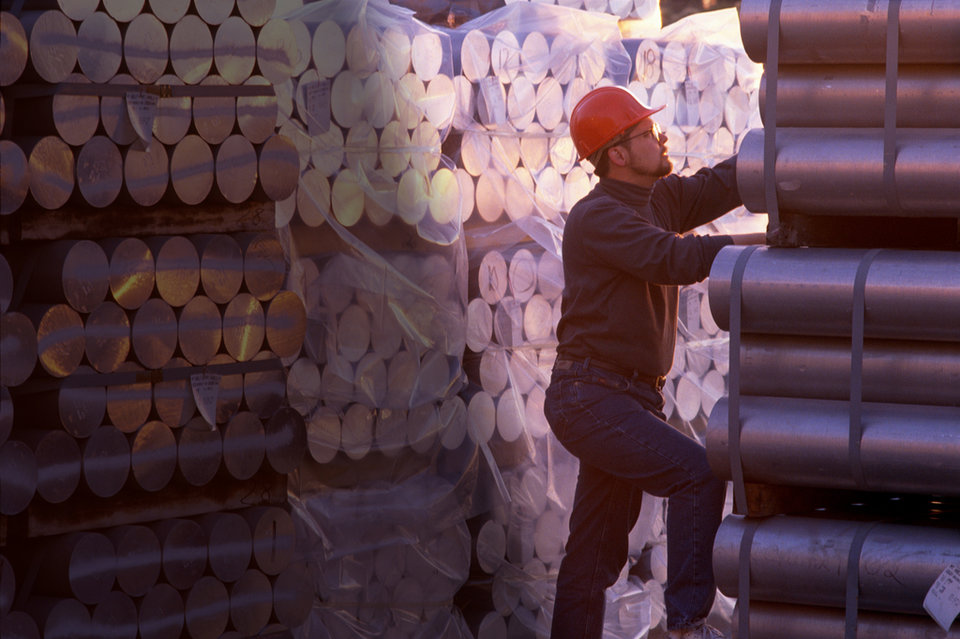METALS
How could the Biden administration change the US aluminium industry?
Since Biden’s election, and with a growing emphasis on protecting the environment, those in the aluminium industry have been wondering if change could be afoot. The Aluminium Association in particular has several suggestions that could improve the sector. Jessie Paige investigates the organisation’s suggestions for a stronger aluminium packaging industry.

In the US, aluminium is an ever-growing industry and an important part of American manufacturing. The material is increasing in demand in the packaging industry by both specialists and consumers due to growing concerns about the environment, sustainability, and the circular economy.
Following President Joe Biden’s election, The Aluminium Association (TAA) – described as “the industry’s leading voice in Washington, DC” – wrote a policy brief containing recommendations for a strong US aluminium industry, including advice for the energy and manufacturing industry as well as packaging.
Tom Dobbins, the president and CEO of TAA, said: “During this challenging time for our nation, it is critically important that we all work together toward renewal and recovery. A strong and growing domestic aluminium industry can play role in the American comeback story.”
Policies and Legislation
In 2019, Biden expressed his belief that plastic should be phased out while on his campaign. In Iowa, Biden told the crowd that the US should be “treating the climate crisis like the existential threat that it is”.
In November 2020, the Break Free from Plastic Pollution Act was introduced, promising to make “certain producers of products” such as packaging and beverage container producers “fiscally responsible for collecting, managing, and recycling or composting the products after consumer use”. This bill begins in January 2022 and will phase out a variety of single-use products, such as packaging utensils.
Additionally, in December 2020, a coalition of 550 conservation groups which included Greenpeace and Beyond Plastics released a Presidential Plastics Action Plan that supplied advice to the president on how to “solve the plastic pollution crisis”.
Dobbins tells Inside Packaging that, while there is not yet any initiative specifically involving the aluminium packaging industry, TAA will continue to offer the government advice and support.
“The Biden Administration has yet to announce any major initiatives that directly impact aluminium packaging; however, the Aluminium Association will continue to advocate for a number of policies to help support a growing and vibrant aluminium industry in the US,” says Dobbins.
“This means strong enforcement of existing trade laws, pushing back on subsidised aluminium overcapacity - especially in China - expanded investment in domestic recycling, robust infrastructure investment, and sensible regulation that will protect the environment and address climate change while also understanding the unique challenges of energy-intensive, trade-exposed industries.”
Emphasis needs to be placed on recycling
One of the most important things that needs to be changed in order to help the aluminium sector, as well as the packaging industry as a whole, is the way that the US recycles materials.
The US faces a range of challenges when it comes to recycling, but the Biden administration could offer optimism when it comes to implementing solutions.
“There is definitely optimism that Biden’s presidency will bring with it more leadership on environmental issues which we hope includes waste management,” explains Sarah Edwards, the North America director of independent consultancy agency Eunomia Research & Consulting.
Not only would an improved recycling system help the environment, but it would also have a positive effect on the financial landscape.
“Capturing all used aluminium beverage cans currently landfilled in the U.S. would generate an additional $800 million each year, providing much needed revenue for the recycling system as a whole,” says TAA in its policy brief.
"The environmental impact is also profound. If the United States recycled every can lost in landfill, we could save more than 5 million metric tons of greenhouse gas emissions each year – the equivalent of taking more than 1 million vehicles off the road”.
It’s important for consumers to understand just how critical it is to recycle.
Dobbins says that understanding recycling in the US is a key objective for the aluminium industry. “In the packaging space specifically, one of our primary objectives is to increase consumer recycling of aluminium beverage containers, “he explains.
“While aluminium cans are recycled more than any other packaging type, we still throw away far too many cans each year – some $810m worth in 2019. This is a massive cost to the economy and the environment.
“First, it’s important for consumers to understand just how critical it is to recycle – recycled aluminium over 90% less energy-intensive than new aluminium. Secondly, public policy has a role to play. We will push for increased investment in recycling infrastructure as part of broader infrastructure spending efforts in Congress this year and we also favour well-designed container deposit programs as part of a suite of solutions to increase aluminium can recycling.”
What does the future hold for US aluminium?
In 2022, the Break Free from Plastic Pollution act will come into effect, which could benefit the aluminium industry as plastic packaging is phased out and alternative materials come into broader focus.
Experts in the aluminium sector are optimistic for the future of the industry, especially where changing recycling infrastructure is concerned.
“We look forward to working with the Biden administration on these and other issues,” says Dobbins. “The Congress has already introduced legislation to enhance recycling and we expect that the administration will support that legislation.”
The future for aluminium in the US is bright according to the experts, and the years ahead could very well reveal the potential that aluminium has in the US packaging industry.
Main image credit: Gary Gladstone / Getty Images